Winchester’s Blind Side Waterfowl shotshells
by Tim Blackwell
Australian Hunter 41
Winchester has released a revolutionary new steel waterfowl shotshell load to the Australian market - and just in time for the bumper 2012 duck season. Blind Side is the end result of several years of research and development by the Winchester team and is arguably the most technologically advanced cartridge on the market.
So how is Blind Side different? Well, the most obvious deviation from traditional shotshell design is the use of non-round shot. That’s right, Blind Side uses almost-cubic shot. Termed ‘Hex’ shot by Winchester’s engineers, it is a dice-shaped, six-sided cube with rounded edges. The main benefit of this is reduced airspace between the shot when packed into the hull, meaning more weight of shot can be added for a given volume. Indeed, Winchester found it could pack 1 3/8oz of shot into the same space usually occupied by 1¼oz of traditional round steel shot, or up to 15 per cent more pellets per cartridge.
Additionally, the multisided shot is said to prevent overpenetration and increase trauma to the target - much like being hit with a tumbling house brick, for want of a better analogy. So, not only are there more pellets hitting the target, but they are more effective when they do; hence, Winchester’s marketing slogan: ‘Stacked. Fast. Deadly.’
Development
It’s not the first time that manufacturers have experimented with non-round shot, but it is the first shotshell I can recall to use it exclusively; that is, without it being mixed with a percentage of traditional round shot. However, it’s not all as simple as it sounds, and Winchester’s engineers had to overcome a number of hurdles before this concept would work as they had hoped.
The first such hurdle was obvious: how to make square shot fly and pattern like traditional round shot. This problem was eventually solved with the development of the ‘Diamond-cut’ wad to control the shot as it left the barrel. This wad holds together with the shot for longer, before diamond-shaped petals protrude to slow the wad down and allow the shot to spread.
Then came the big trade-off; Winchester could now pack more shot into the hull, but to do so at the same high velocities would mean a marked increase in recoil. Nothing comes free in the world of ballistics, and everything is a compromise that comes at a price. Winchester helped with this by placing a cushioned wad between the powder column and the shot in an effort to reduce felt recoil while still maintaining a relatively fast 1400fps velocity. Logic would tell us that the Hex shot would shed velocity at a greater rate than more aerodynamic round shot, so achieving a good starting velocity would be vital.
Finally, Blind Side cartridges encompass the already well-established Winchester Drylok sealing system. This is ideal for waterfowlers to help keep moisture from entering the shell and possibly contaminating the powder or shot, and is one less thing to worry about when wading the duck swamps.
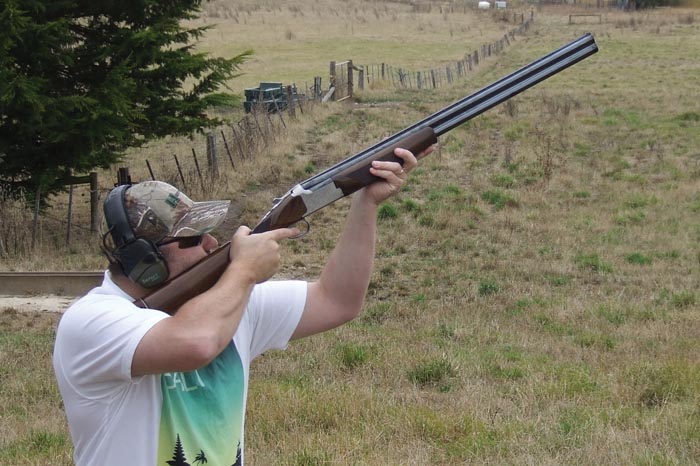
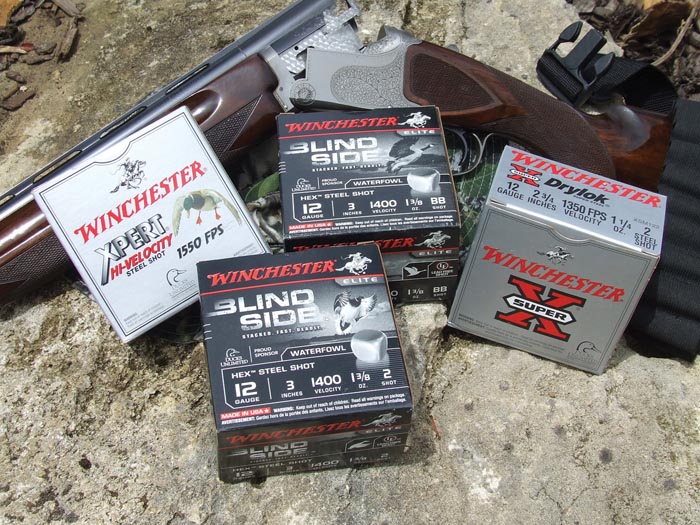
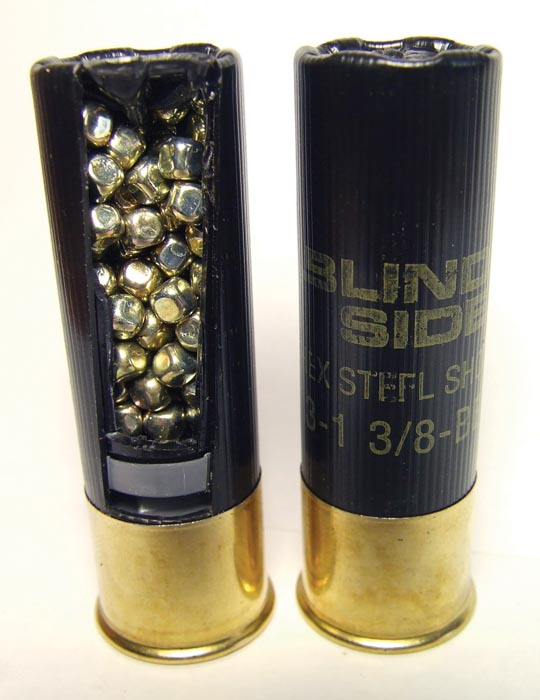
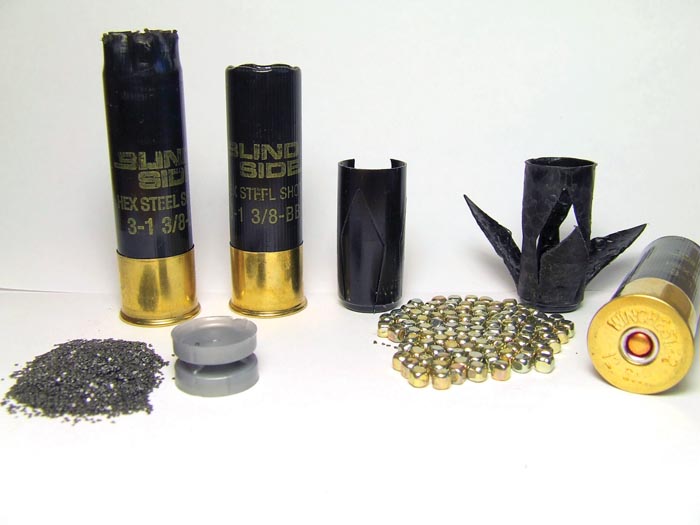
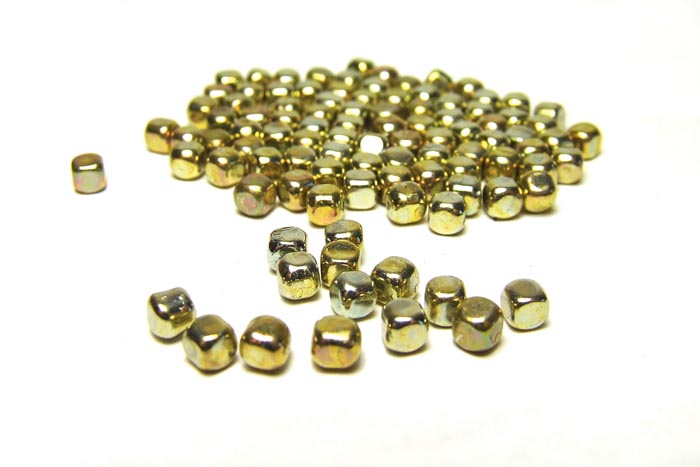
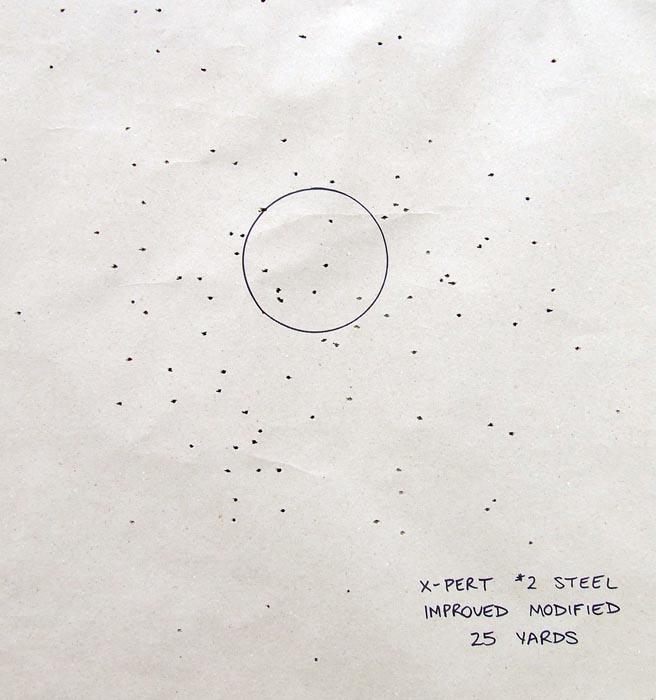
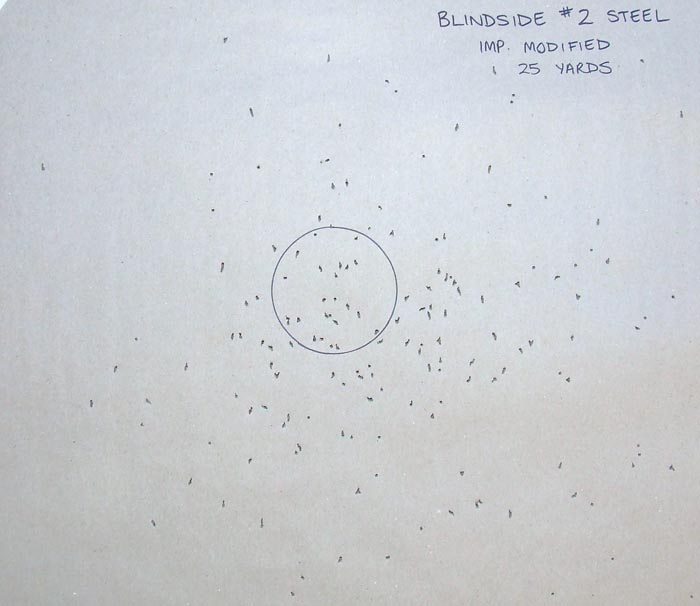
Construction
When we look inside the Blind Side cartridge and inspect its construction, it becomes obvious that this isn’t like any standard shotshell load we’ve seen before. Outwardly, we have a black ribbed hull with an 18mm-high brass case-head and Winchester’s standard star crimp. Dismantling the 3" load, however, reveals the unique inner workings - about 34 grains of a flaked shotgun powder packed into the cushion wad, beneath the diamond-cut wad containing its column of Hex shot. The nose of the cushion wad forms a cup, which encompasses the base of the diamond-cut wad, locking it all together very neatly.
Testing
The first part of the testing process I wanted to achieve was to pattern some of the Blind Side loads against regular steel shot to see how they fared. In accordance with their hard-hitting persona, Blind Side is only available in a limited number of pretty hefty loads, including No. 2 and BB shot only in both 3 and 3½" Magnum 12-gauge loadings. The latter, I would wager, will not have a great deal of application in Australia, but might well find favour with magpie and Cape Barren geese hunters.
For testing, I used a pair of shotguns commonly found among Australia’s duck hunters: a Lanber 2097 and a Miroku M10, both featuring 30" barrels and interchangeable steel-compatible chokes. My pattern board was placed at 25 yards as usual and I used a single 5" circle as an aiming point. I patterned the different Blind Side loads, along with Winchester traditional Drylok and Xpert steel waterfowl loads, to see how they would compare through the same gun and choke combination.
The results on the pattern sheet were impressive indeed. Blind Side loads threw dense, consistent patterns, with noticeably more pellets hitting the target area - please refer to the accompanying photos, which illustrate my findings. It was interesting digging a few pellets out of the patterning board too; consistently across the target, the Blind Side’s Hex shot had not penetrated as deeply as the round shot of the Xperts or Dryloks. This supports the theory behind the Hex shot’s increased blunt-force trauma rather than sheer penetration.
As duck season had not yet started here in South Australia or across the border at the time of testing, my testing was confined to shooting a variety of clay targets, from fast-crossing birds to high flyers and Down the Line-style targets. The results were certainly emphatic, as one would expect after patterning the shells. Recoil was stout and more than I would bear for an extended clay shooting session. However, these cartridges are designed for use in the field, where recoil is seldom as noticeable as it is when target shooting. No doubt, the 3½" versions would pack a mighty punch at both ends and some added gun-weight would be of benefit there. Nevertheless, I am not sure felt recoil is much different to any standard 3" 12-gauge loading. Either way, they are going to take their toll by the end of the day’s hunting.
Summary
Winchester’s new Blind Side ammo may just be the hardest hitting and best designed waterfowl load there is. It certainly packs a hefty punch and would likely be the ideal combination for use on large, open-water areas, where shots can stretch out, or for our larger duck and goose species. The Hex shot patterned beautifully in the test guns and shot consistently well on passing targets. It certainly seems the combination of the new shot and the diamond-cut wad achieves just what is claimed by Winchester. Whether or not they afford a real advantage over standard 3" steel loads remains to be seen, and of course, a lot of it will come down to how it patterns in your particular gun.
Personally, I would like to see the Blind Side range extended to include the ever-popular No. 4 shot, and I would be interested to know if the design could be adapted to work efficiently in standard 2¾" shells, which I believe would broaden their appeal.
Blind Side cartridges are not cheap. Prices I obtained were around the $360 mark for a case of 250 shells; this is more than double the cost of most standard steel loads, which will do the job in many scenarios. However, performance costs money and Blind Side definitely does perform. In fact, for open-water situations or for larger birds, it would be hard to beat. When you have the need for an ultra-hard-hitting steel waterfowl load, Winchester Blind Side would certainly be worth testing in your favourite duck gun.
